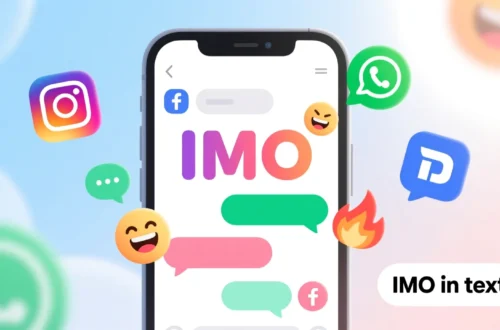Waking up to the soft light of dawn in a small Italian village, I once heard a neighbor call out “Buongiorno!” with a warmth that made the day feel brighter. That simple phrase, “good morning,” carries a universal promise of new beginnings, yet it takes on unique tones across cultures.
Whether it’s a cheerful “Selamat pagi” in a Balinese market or a heartfelt “Sabah al-khair” in a Cairo street, this greeting reflects humanity’s shared optimism, shaped by local traditions.
Let’s explore how people worldwide say “good morning” and what these greetings reveal about their cultures.
Reference Table: “Good Morning” in Different Languages
| Language | Word/Phrase | Cultural/Linguistic Insight |
|---|---|---|
| French | Bonjour | Literally “good day,” used as a morning greeting with polite charm. |
| Spanish | Buenos días | Means “good days,” pluralized to wish a great day ahead. |
| Italian | Buongiorno | A warm, all-purpose greeting for morning or day in Italy. |
| German | Guten Morgen | Straightforward, reflecting Germany’s direct communication style. |
| Mandarin | Zǎo ān (早上好) | Means “morning peace,” emphasizing calm and harmony. |
| Hindi | Suprabhat | Derived from Sanskrit, it wishes a “splendid morning.” |
| Japanese | Ohayō (おはよう) | A casual morning greeting, often used among friends or family. |
| Korean | Annyeonghaseyo (안녕하세요) | Formal “hello” used in mornings, reflecting respect. |
| Arabic | Sabah al-khair (صباح الخير) | Means “morning of goodness,” used across 20+ countries. |
| Swahili | Habari za asubuhi | Translates to “news of the morning,” inviting conversation. |
| Zulu | Sawubona ekuseni | Means “we see you in the morning,” a communal greeting. |
| Yoruba | E kaaro | Means “good morning,” often paired with respectful gestures. |
| Maori | Ata mārie | Means “peaceful morning,” tied to harmony in New Zealand. |
| Hawaiian | Aloha kakahiaka | Combines “aloha” with “morning,” evoking warmth and love. |
| Cherokee | Osda sunalei | Means “good morning,” a warm start in Native American communities. |
European Languages: Warm Starts to the Day
European languages greet the morning with warmth and cultural flair. For instance, in French, “bonjour” (good day) doubles as a morning greeting, spoken with polite charm in Parisian cafés. Meanwhile, Spanish uses “buenos días” (good days), a pluralized wish for a great day, often heard in lively Madrid markets. Additionally, Italian’s “buongiorno” (good day) is a versatile, heartfelt greeting, used from Rome’s bustling streets to quiet villages. In German, “Guten Morgen” is direct and formal, reflecting Germany’s straightforward communication. Thus, these greetings blend optimism with cultural values, from French elegance to German precision, setting a hopeful tone for the day.
Asian Languages: Harmony in Morning Greetings
Asia’s linguistic diversity shapes unique morning greetings, often tied to peace and respect. For example, in Mandarin, “zǎo ān” (morning peace) wishes a calm start, reflecting China’s emphasis on harmony. In Hindi, “suprabhat” (splendid morning) carries a poetic flair, used in India’s vibrant cities to inspire positivity. Similarly, Japanese’s “ohayō” is a casual greeting, spoken among friends in Tokyo to start the day warmly. In Korean, “annyeonghaseyo” (hello) is used formally in mornings, showing respect in Seoul’s busy streets. Finally, Arabic’s “sabah al-khair” (morning of goodness), used across over 20 countries like Egypt and Saudi Arabia, conveys blessings, rooted in the region’s tradition of generous hospitality. These greetings highlight Asia’s range, from concise warmth to elaborate well-wishes.
African Languages: Community in Morning Salutations
In African languages, “good morning” often fosters community and connection. For instance, Swahili, spoken in over 20 countries like Kenya and Tanzania, uses “habari za asubuhi” (news of the morning), inviting conversation in bustling markets. In Zulu, “sawubona ekuseni” (we see you in the morning) is a communal greeting in South Africa, emphasizing visibility and connection. Similarly, Yoruba’s “e kaaro” (good morning) in Nigeria is often paired with respectful gestures, reflecting cultural warmth. These greetings, used across diverse African settings, radiate optimism and strengthen social bonds, often shared in lively communal spaces.
Indigenous & Island Languages: Morning Bonds of Unity
Indigenous and island languages greet the morning with simplicity and harmony. For example, Maori in New Zealand uses “ata mārie” (peaceful morning), reflecting the culture’s focus on balance and peace. In Hawaiian, “aloha kakahiaka” combines “aloha” (love) with “morning,” creating a warm greeting tied to the islands’ spirit. Similarly, Cherokee’s “osda sunalei” (good morning) is a heartfelt start, used in Native American communities to foster connection. In Samoan, “talofa i le taeao” (hello in the morning) reflects the Pacific’s communal warmth, often used in group settings. Across these cultures, from New Zealand to the Cherokee Nation, morning greetings emphasize unity and hope, often tied to shared traditions.
Cultural Insights: The Evolution of Morning Greetings
Morning greetings have evolved with cultural values. For instance, the English “good morning” traces back to Old English, emphasizing a positive start. In Arabic, “sabah al-khair” reflects medieval Islamic traditions of invoking blessings. Moreover, in African languages like Swahili, “habari za asubuhi” stems from trade-era exchanges, inviting connection. In Asia, terms like “zǎo ān” and “ohayō” align with philosophies of harmony and respect, shaped by centuries of cultural practice. These greetings are more than words—they carry histories of community, spirituality, and optimism, uniting people across time.
Proverbs and Sayings: Wisdom of New Beginnings
- French: “Le matin porte conseil.” (The morning brings wisdom.) – Highlights the clarity of a new day.
- Hindi: “Subah ka suraj nayi ummeed.” (The morning sun brings new hope.) – Ties mornings to optimism.
- Swahili: “Asubuhi ni mwanzo wa maisha.” (Morning is the start of life.) – Emphasizes renewal.
- Japanese: “Ohayō, kokoro ga hiraku.” (Good morning, the heart opens.) – Links mornings to emotional openness.
- Yoruba: “Kaaro, ayọ de.” (Good morning, joy arrives.) – Connects mornings to happiness.
FAQs
Why do some morning greetings sound similar?
Shared linguistic roots (e.g., Indo-European languages like French and Spanish) and cultural exchanges (e.g., Arabic’s influence on Swahili) create similarities.
What’s the oldest term for “good morning”?
Old English “gōdne morgen” (circa 1000 CE) is among the earliest recorded, evolving into modern English usage.
How do cultures shape morning greetings?
Collectivist cultures (e.g., African, Indigenous) use greetings to build community, while individualistic cultures (e.g., European) focus on personal well-wishes.
Conclusion
From “buenos días” in Spain to “habari za asubuhi” in Tanzania, “good morning” weaves a global thread of hope and connection. Each phrase, whether the serene “zǎo ān” in Mandarin or the warm “ata mārie” in Maori, reflects cultural values while celebrating our shared love for new beginnings. Consequently, these greetings remind us that a simple morning wish can brighten someone’s day, uniting all people in optimism. How do you say “good morning” in your language, and what does it mean to you? Share your stories below—we’re excited to hear your voice!





